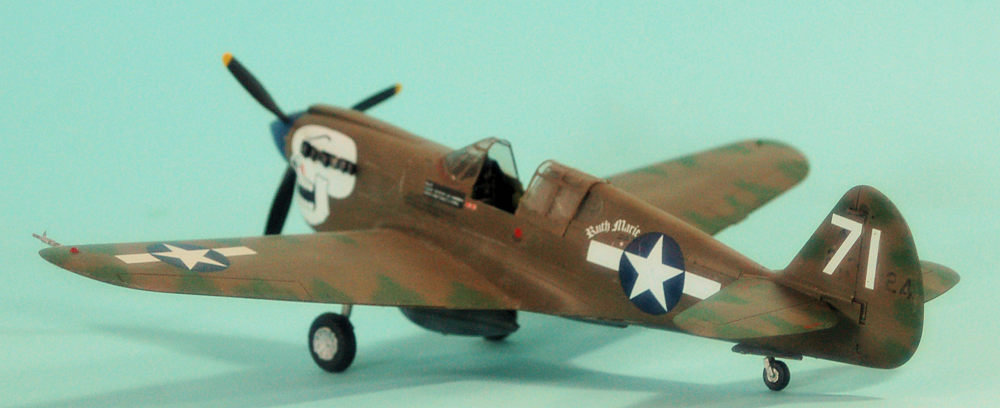
| KIT #: | 00084 |
| PRICE: | $19.99 'used' |
| DECALS: | Two options |
| REVIEWER: | Tom Cleaver |
| NOTES: | SuperScale 48-712 “P-40N Aces of the CBI” |

| HISTORY |
The P-40N was the final P-40 sub-type to see operational service.
Appearing in 1943, it was an attempt on the part of Curtiss to lighten the
airframe and improve performance. The P-40N-1 was outwardly indistinguishable
from the preceding P-40M, except that the outer gun in each wing had been
removed, and smaller and lighter P-51 main gear wheels were used. In this
“stripped” version, it was the faster P-40, with a top speed of 380mph. However,
once in service, most groups opted to restore the guns,
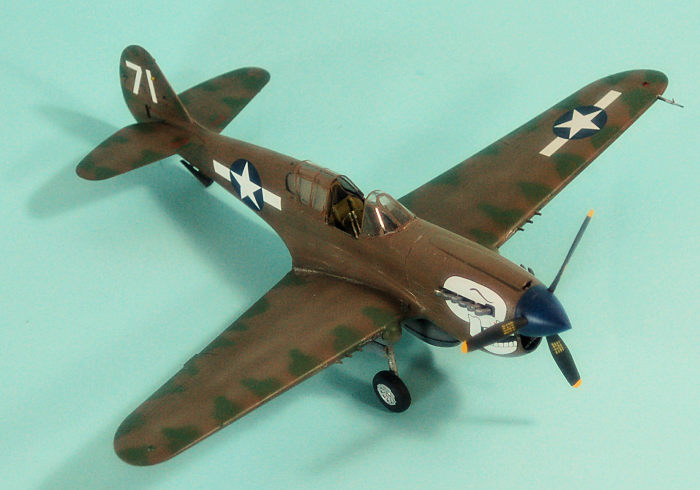 and some in
China and the CBI replaced the smaller wheels with the earlier, larger ones to
make navigating a muddy airfield easier. The P-40N-1 was quickly supplanted by
the P-40N-5, which had a much-modified canopy and rear area of the cockpit to
improve visibility.
and some in
China and the CBI replaced the smaller wheels with the earlier, larger ones to
make navigating a muddy airfield easier. The P-40N-1 was quickly supplanted by
the P-40N-5, which had a much-modified canopy and rear area of the cockpit to
improve visibility.
The Burma Banshees:
Formed in the spring of 1942, the 80th Fighter Group, consisting of the 88th, 89th and 90th Fighter Squadrons, trained for a year on the P-47 in the expectation they would be sent to the Eighth Air Force to fly escort to the bombers over Europe.
The AAF had different ideas.
On May 10, 1943, the group shipped out of New York harbor, but the ships turned south rather than east, and went to Cape Town, South Africa, then up the east coast of Africa to arrive at Karachi, India, on June 29, 1943. Stationed at Sind Airfield, 15 miles outside of town in the middle of the desert, the men found no P-47s awaiting them. A few ancient Hawk 81.A-3s long since given up by the American Volunteer Group were available for conversion training to their new mount, the Curtiss P-40.
Several weeks later, 48 P-40N-1s flew into the field to provide the group’s equipment. Shortly after, all the senior leadership of the group and squadrons were replaced by experienced pilots of the 51st Fighter Group, which was moving up to China. The 80th FG would now become the Tenth Air Force’s fighter group in Assam.
In September, the 89th FS established itself at Nagugli, followed at the
end of the month by the 88th, which set up at Mokelbari. They were just in time
for the south Asian monsoon, which hindered operations throughout the fall of
1943. The pilots were able to grow familiar with the territory and their
mission: defense of the Hump airfields from Japanese attack, and ground attack
against targets in
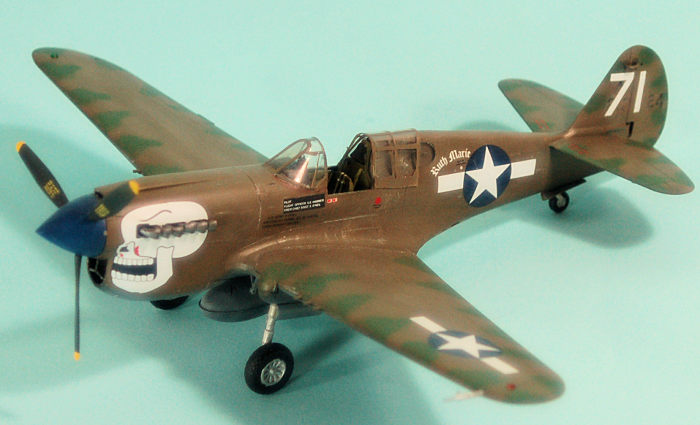 Burma.
Burma.
89th FS pilot 1st Lt. Dixie Clower came up with the group’s distinctive nose marking during their first months in-theater. No two of the skulls painted on the noses of the P-40s was the same, and the unit took the name “Burma Banshees.”
On December 10, 1943, Captain William S. Harrell was leading four P-40Ns of the 89th FS when they spotted three Ki.21 “Sally” bombers, escorted by four Ki.43 “Oscar” fighters. In their first pass, Harrell shot down an Oscar and a Sally, while element leader 1st Lt George Whitley shot down a second Sally, while his wingman, 2nd Lt Dodd Shepard, shot down another Oscar. Harrell was unable to knock down the third Sally, which fell to his wingman, 2nd Lt. McCarty. Harrell was soon promoted CO of the 89th FS, but like most pilots in the 80th FG, he had no further opportunity for aerial combat.
Two weeks later, pilots of the 88th and 89th squadrons intercepted a Japanese bombing raid, during which two Sallys and five Oscars were shot down.
The 80th’s best day was March 27, 1944, when the Banshees flew in support of Merrill’s Marauders as “flying artillery. Oscars attacked and in several different fights, 18 enemy aircraft were shot down. 1st Lt. Ralph Ward’s flight from the 90th squadron ran across a Japanese formation and Ward, his wingman 2nd Lt. Gale Lyon, element leader 2nd Lt Joe Patton, and his wingman, Flight Officer Samuel E. “Gene” Hammer, who had only recently joined the group, shot down two each as they chased the Japanese back into Burma.
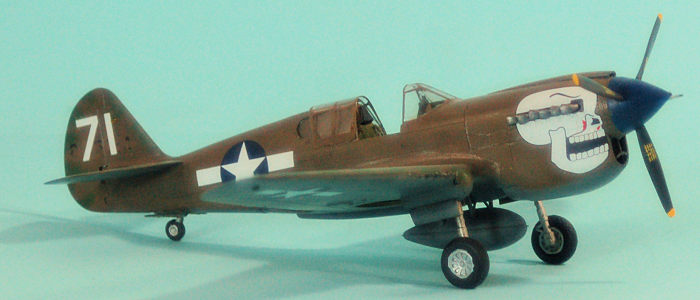 These
doubles were beaten by two pilots of the 89th Squadron involved in the same 2nd
Lt. Herbert “Hal” Doughty who shot down two Oscars and a Ki.49 Helen, while his
flight leader, 1st Lt. R.D. Bell, also got two Oscars and a Helen.
These
doubles were beaten by two pilots of the 89th Squadron involved in the same 2nd
Lt. Herbert “Hal” Doughty who shot down two Oscars and a Ki.49 Helen, while his
flight leader, 1st Lt. R.D. Bell, also got two Oscars and a Helen.
The last P-40 victories scored by an 80th group pilot were gotten by Gale Lyon on July 9, 1944. His flight of P-40s, each carrying two 250-lb bombs, spotted a large formation of Oscars that attacked them jsut as the Americans salvoed their bombs. Lyon’s wingman, 1st Lt. Tom O’Connor was shot down, and Lyon managed to spot two enemy fighters in the clouds in quick succession and shoot them down before being spotted.
That summer, the 80th was finally re-equipped with P-47s and blazed a trail across Burma as fighter bombers. Lyons’ score of four was beaten on December 14, 1944 by Gene Hammer, by then a commissioned 2nd Lt., shot down three Ki.44 Tojos, which added to his two Ki.21s the previous March, made him the only ace of the Burma Banshees.
| THE KIT |
The Mauve P-40M and P-40N kits first appeared in late 1994 (there was
also a release of an RAF Kittyhawk III - the P-40M with different decals). They
were vastly superior to the AMT P-40s being
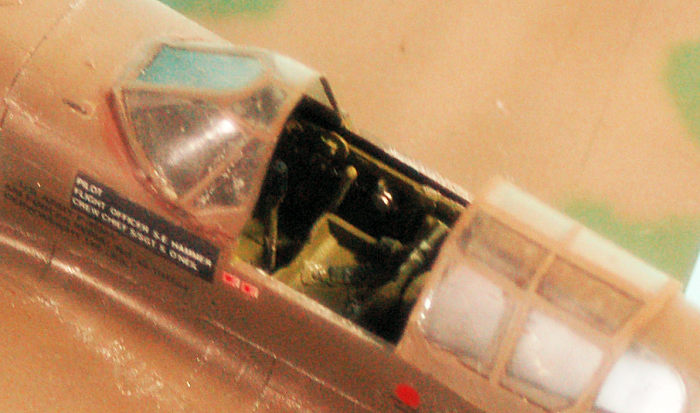 released
around the same time in terms of delicate surface detail, and much was expected
of the company based on these excellent kits. Unfortunately, the 1995 Kobe
earthquake destroyed their production facility.
released
around the same time in terms of delicate surface detail, and much was expected
of the company based on these excellent kits. Unfortunately, the 1995 Kobe
earthquake destroyed their production facility.
Other than their cockpits, these kits are actually superior to the later Hasegawa P-40s in terms of surface detail and ease of assembly. At the time, resin cockpits were produced by True Details and Squadron/Falcon made vacuform canopies fitted for the kits, which were superior to the kit canopies which were too thick to be displayed open.
Cut to 22 years later - I happen to be fortunate to have an LHS 15 minutes from me here in the City of Lost Angles, run by a guy who understands the problem created by his customers “of a certain age” departing for the big hobbyshop in the sky and leaving basements or garages full of those #$%$#@!! models their survivors have to deal with. Thus, one can walk in the shop and often find large selections of older kits, being sold at their original prices (or less). This past fall, I snagged two Mauve kits - a P-40M and a P-40N. Old decal sheets are also found there, and I spotted SuperScale 49-712, “P-40N Aces of the CBI.” A quick order of two True Details cockpits and two Squadron canopies, and I was on my way.
| CONSTRUCTION |
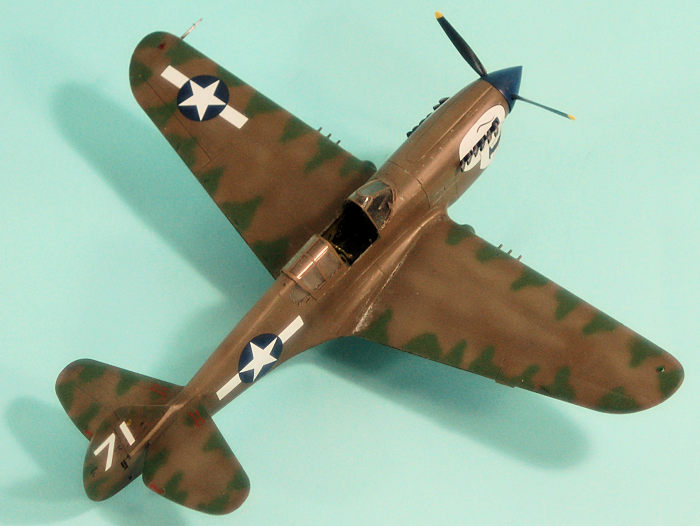 The Mauve
kits are easy to build, there are none of the “inserts” one finds in the
Hasegawa P-40s. There is more detail in the Hasegawa kits in terms of the nose
radiator, a better tailwheel, etc., but nothing major.
The Mauve
kits are easy to build, there are none of the “inserts” one finds in the
Hasegawa P-40s. There is more detail in the Hasegawa kits in terms of the nose
radiator, a better tailwheel, etc., but nothing major.
I assembled the wing and fuselage sub-assemblies, then painted the resin cockpit and assembled it, then fitted it in the fuselage. I found it was useful to put a spreader bar in the fuselage aft of the cockpit, using a piece of cut-down sprue, to get a good join of wing and fuselage.
I trimmed and fitted the Squadron vacuform canopy windscreen and glued it in place with C-A after dipping in Future to avoid fogging.
With care in assembly, I only needed some Mr. Surfacer on the fuselage centerline and the upper wing/fuselage join. After attaching the horizontal stabilizers, the model was ready for painting.
| COLORS & MARKINGS |
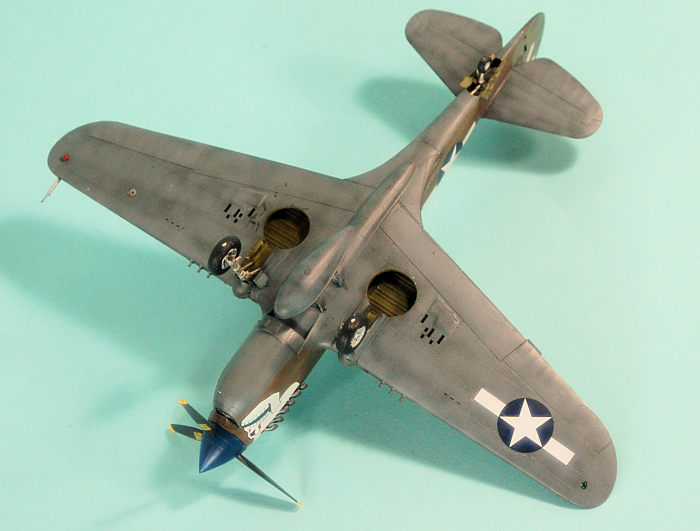 I used
Tamiya Neutral Grey and my mixture of Tamiya “Khaki Drab,” “Flat Earth” and a
bit of “flat Yellow” to create brown-drab late war Olive Drab. These were
free-handed, and both colors were post-shaded. I used Tamiya “Flat Green” for
the medium green blotches on the leading and trailing edges of the flying
surfaces that Curtiss painted their P-40Ns.
I used
Tamiya Neutral Grey and my mixture of Tamiya “Khaki Drab,” “Flat Earth” and a
bit of “flat Yellow” to create brown-drab late war Olive Drab. These were
free-handed, and both colors were post-shaded. I used Tamiya “Flat Green” for
the medium green blotches on the leading and trailing edges of the flying
surfaces that Curtiss painted their P-40Ns.
The SuperScale decals for Gene Hammer’s “Ruth Marie” White 71 went on without problem.
I attached the landing gear. The prop blades in the kit are too long, so I cut them 1/16" shorter and then reshaped them, which incidentally turned them into the “paddle” blades that were right for the P-40N. I gave the model an overall coat of clear flat, then “dinged” it with a silver pencil. I unmasked the canopy and installed the sliding section open.
| CONCLUSIONS |
It’s really too bad Mauve ran into bad luck with the earthquake, because they were on the way to establishing themselves as a player in the industry. These kits are still great models if you find them and are well worth picking up. Fortunately, Squadron still carries the cockpits and canopies, and decals can be found on the internet if you don’t have an LHS like mine any more.
1 February 2018
Copyright ModelingMadness.com
Review kit courtesy of my wallet.
If you would like your product reviewed fairly and quickly, please contact the editor or see other details in the Note to Contributors.